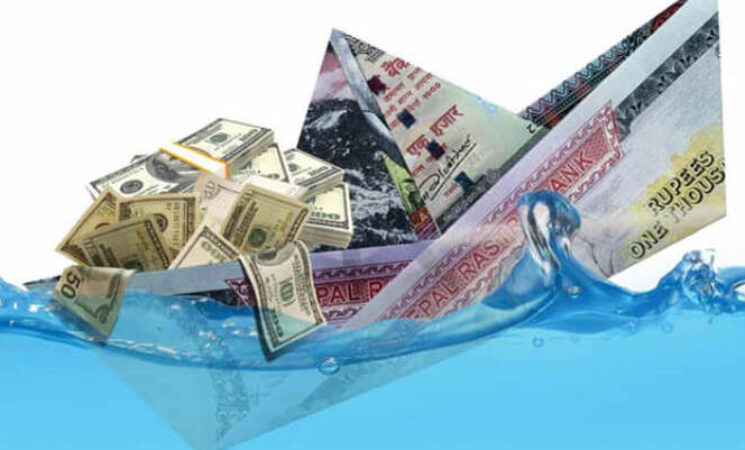19 September 2022, NIICE Commentary 8272
Ruby Khadgi
A magnitude of critical issues is being debated all over the globe, and a massive upsurge of how long the countries will take the Sri Lanka way is the most controversial one. According to a recent World Food Programme (WFP) and UN Food and Agriculture Organization (FAO) assessment, 6.3 million people, or roughly 30 percent of the population, are food insecure. It comes as the WFP warns of an unprecedented worldwide food crisis and if sufficient life-saving support and assistance are not given, it is anticipated that the condition would worsen especially during the lean season, which runs from October 2022 to February 2023. Millions of families in Sri Lanka are struggling to buy even basic foods like rice due to the country’s record-high food inflation rate of 90 percent. According to experts, Sri Lanka, which depends on imported necessities but is having trouble paying for them due to its bad export performance after tourism fell due to the COVID-19 outbreak, is a prime example of the dangers of relying heavily on imports. The food crisis in Sri Lanka is being shaped by numerous variables. The government this year outlawed imported artificial fertilisers to make farming more environmentally friendly. Although import restrictions have subsequently been relaxed, the impacts of the move, which drastically lowered agricultural output, persist.
In the context of Nepal, according to analysts, food imports, notably from India, have reached crisis proportions in recent years, posing a serious threat to national security. Nepal used to buy USD11.84 million in food and farm products from its neighbour India each year in 2001. While Nepalis splurged their remittance income, the food import cost has increased 78 times to approximately USD1 billion by 2021. As the agriculture industry in Nepal has been struggling for a while and Nepalese products cannot compete with those from India due to which people prefer to buy cheaper Indian items. The bilateral trade agreement between India and Nepal in 1996 is one of the variables influencing food imports from India. The agreement permits reciprocal duty-free access to primary agricultural products. This strategy permits Indian goods to enter Nepal, which is significantly cheaper due to India’s massively subsidized agriculture sector. In fact, the policy was defective because Nepal was a developing nation.
The 1996 Trade Treaty between India and Nepal was simply one of India’s many larger plans, and it was a logical decision to expand the market network for agricultural goods in international markets. It’s interesting to note that throughout this time, Nepal switched from being the next food exporter to an importer, while India benefited from increasing agricultural productivity. Nepal have previously seen the 2015 blockade, when India cut off the supply of petroleum, leaving Nepal completely reliant on imports, and now the economic trend in South Asia is seemingly troubling to Nepal, the trajectory is ominously like Sri Lanka.
Sri Lanka, the country with robust banking system, and superior educational facilities to Nepal; whose economy grew among the quickest in Asia in 2010 not to mention the fact that Sri Lanka acquired the highest HDI rank 0.782 (considered to be the high human development) in 2020 among the SAARC countries solely on the basis of education index, income index and life expectancy index, is facing the worst economic collapse in its modern history, which can be a warning sign to other developing nations because it’s a classic emerging market crisis in many ways in modern history.
The ongoing debate on how many months is Nepal going to become the next Sri Lanka shouldn’t be the question rather the question is how the country with so much potential, have had nearly USD1 billion on buying food from India alone in a year and can Nepal, a country of farmers, revive from being a food importer over the years?
The crisis is, after all, not local but global. Rising debt, social unrest, food shortages, and out-of-control fuel prices are some of the primary causes of economic gloom in both developing and developed countries. However, each country must find its own way to deal with its unique set of circumstances and challenges. The government’s import-driven policy needs to be replaced with a production-driven program if we want to prevent future economic crises.
The lessons from Sri Lanka should be obvious to people in Nepal. Strong, if not visionary, leadership, social cohesion, fiscal prudence is all required. In contract, youth participation in political processes around the world has increased recently, and many of them are working to bring about long-lasting changes that would solve today’s most urgent social issues. All these issues require healthy discussion because Nepal is unlikely to recover if it were to turn into the next Sri Lanka.
Ruby Khadgi is a legal consultant for A2J Project at United Nations Development Programme (UNDP) and currently doing Masters at Victoria University, Australia.

